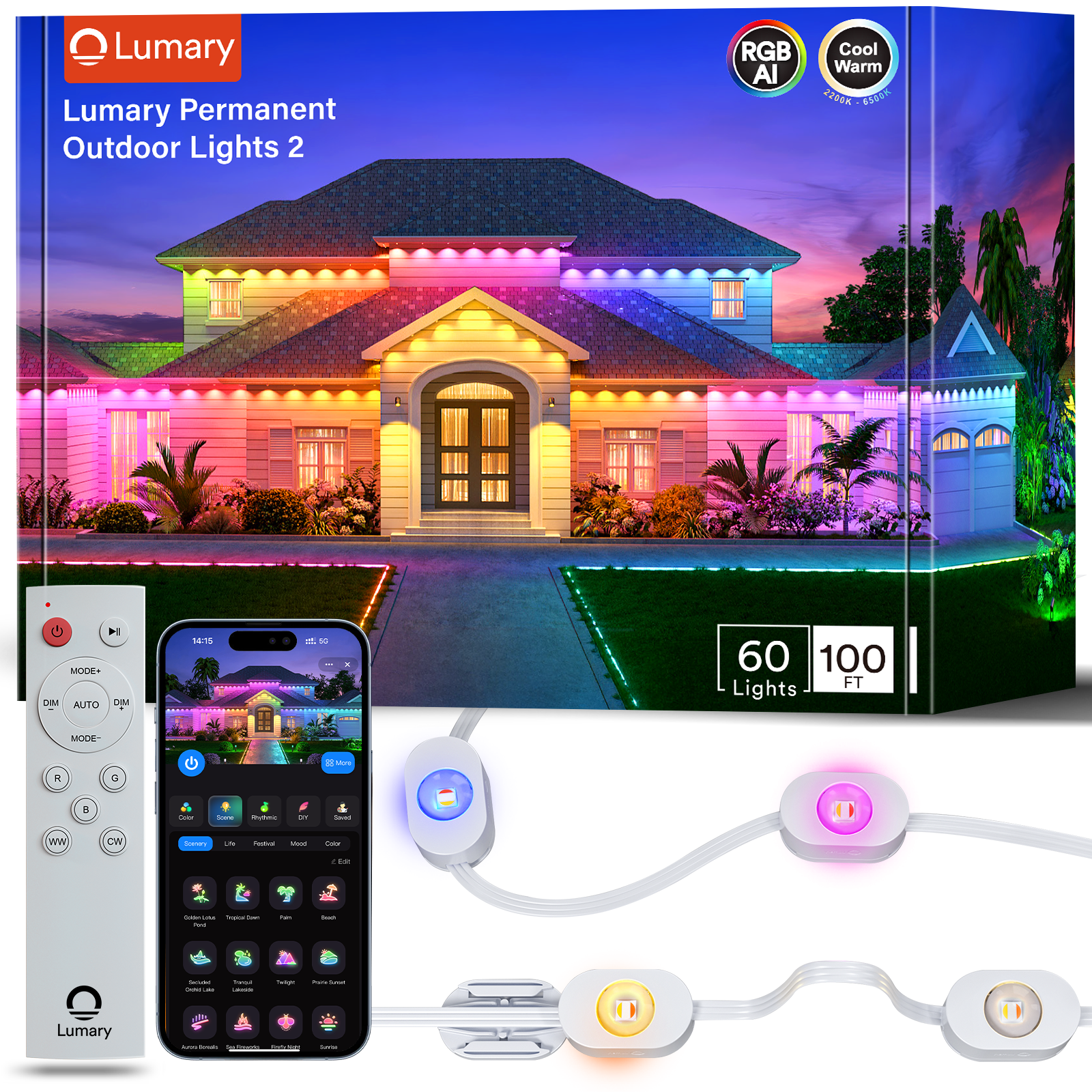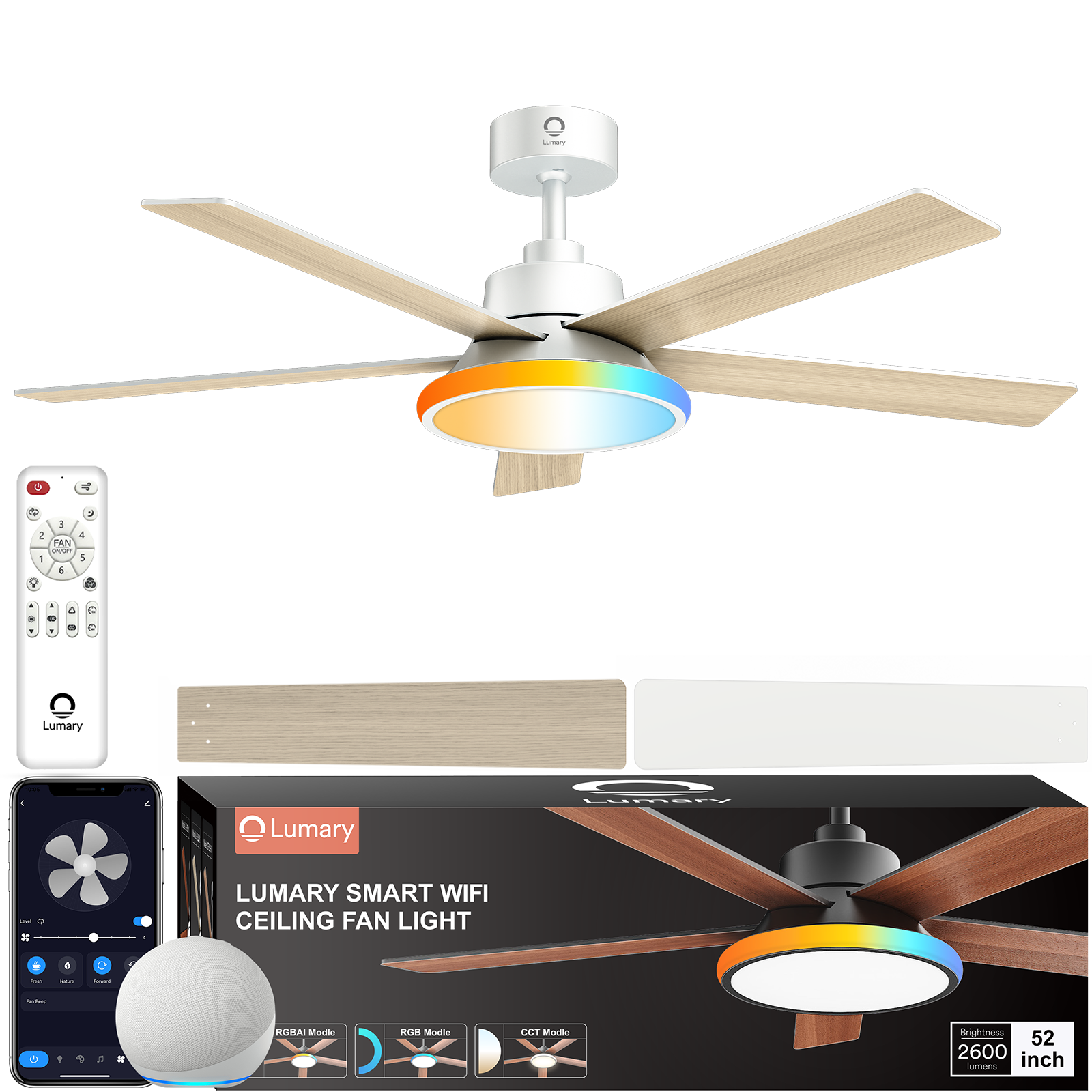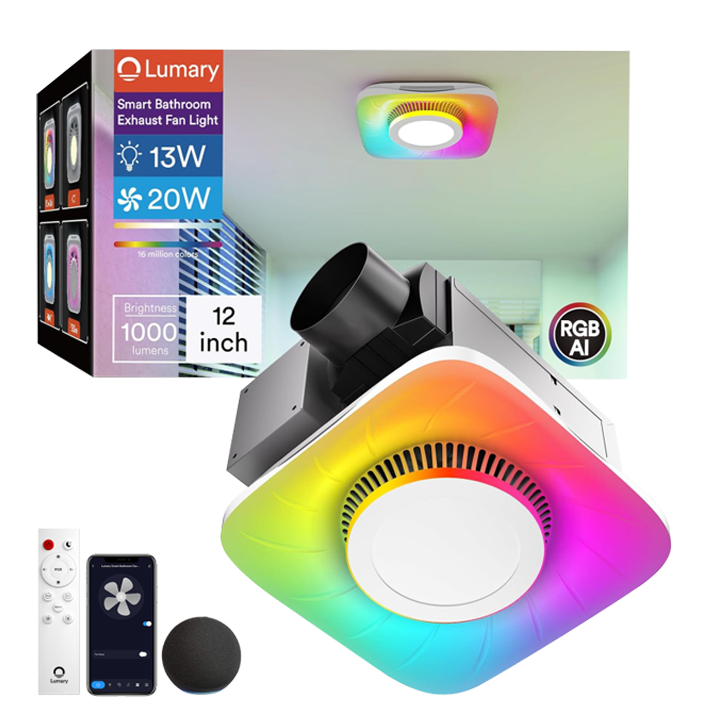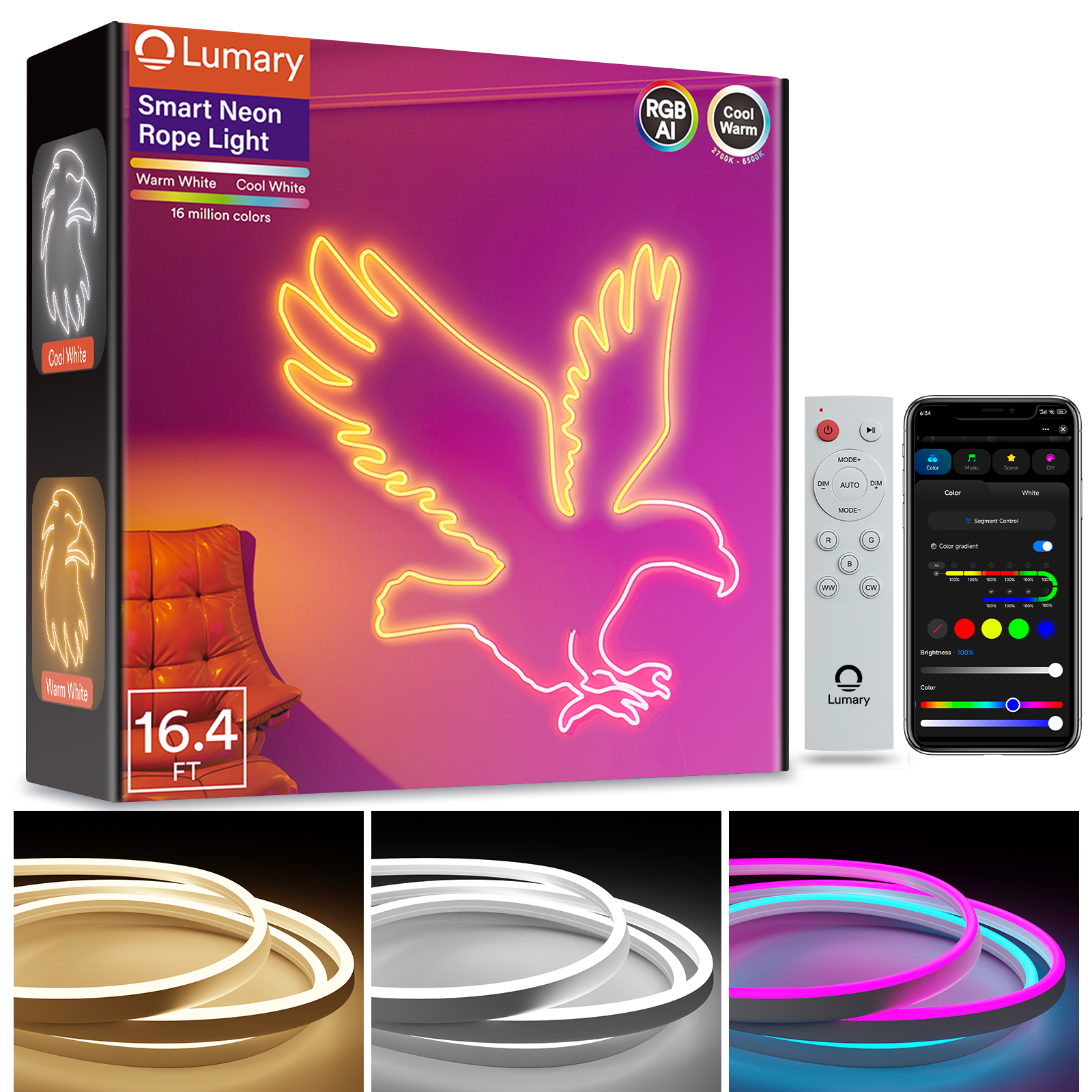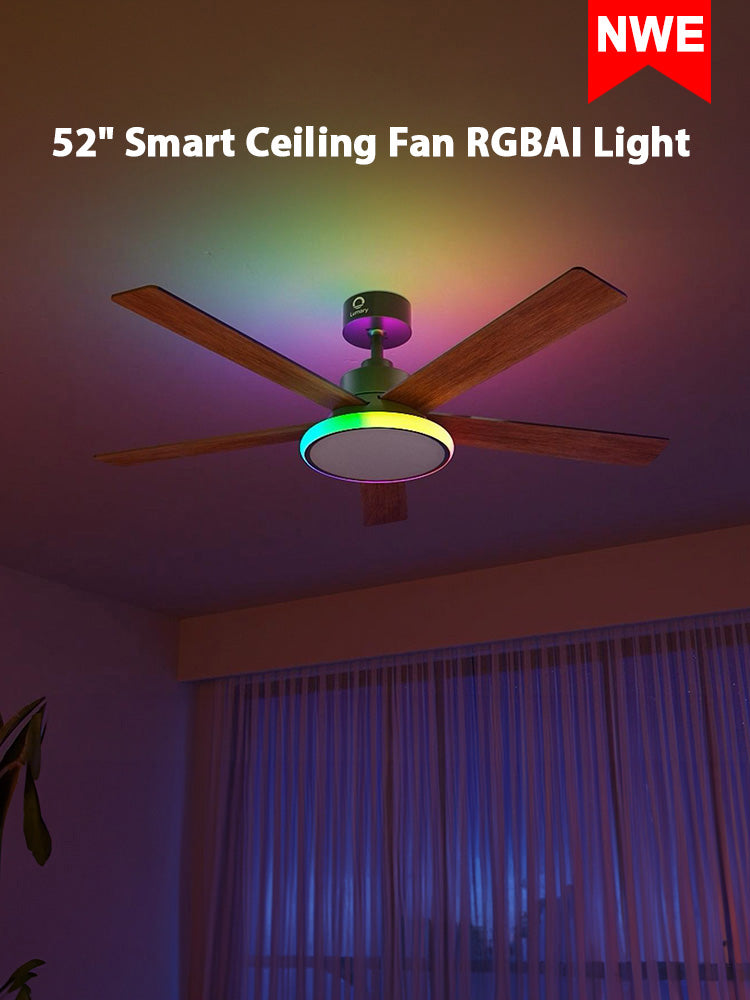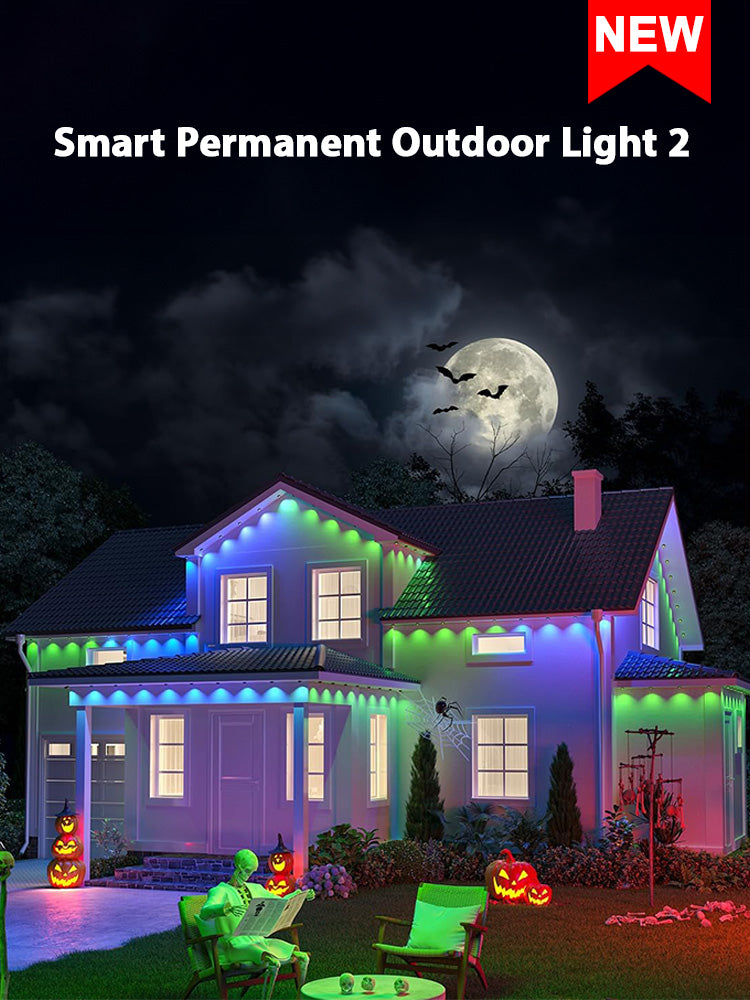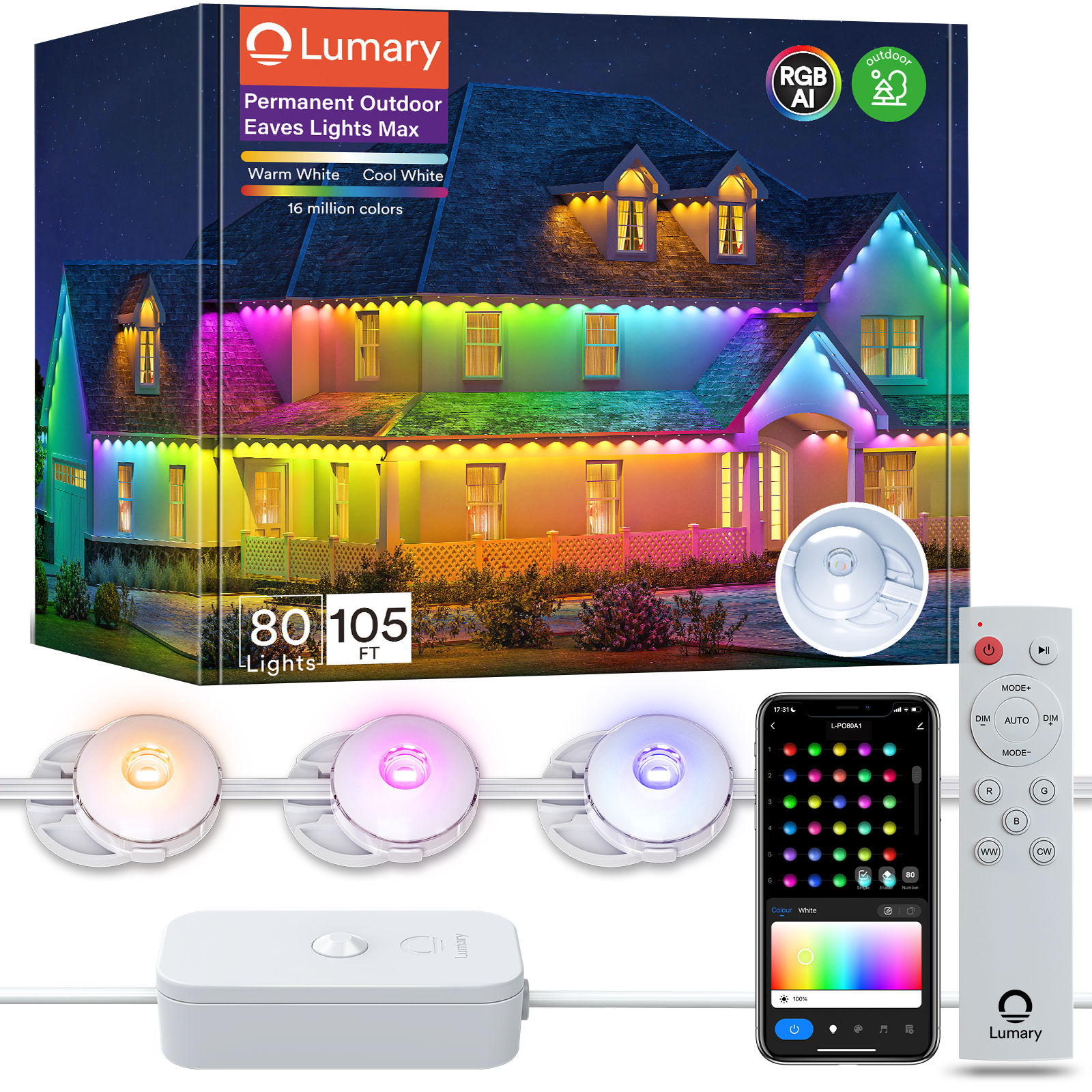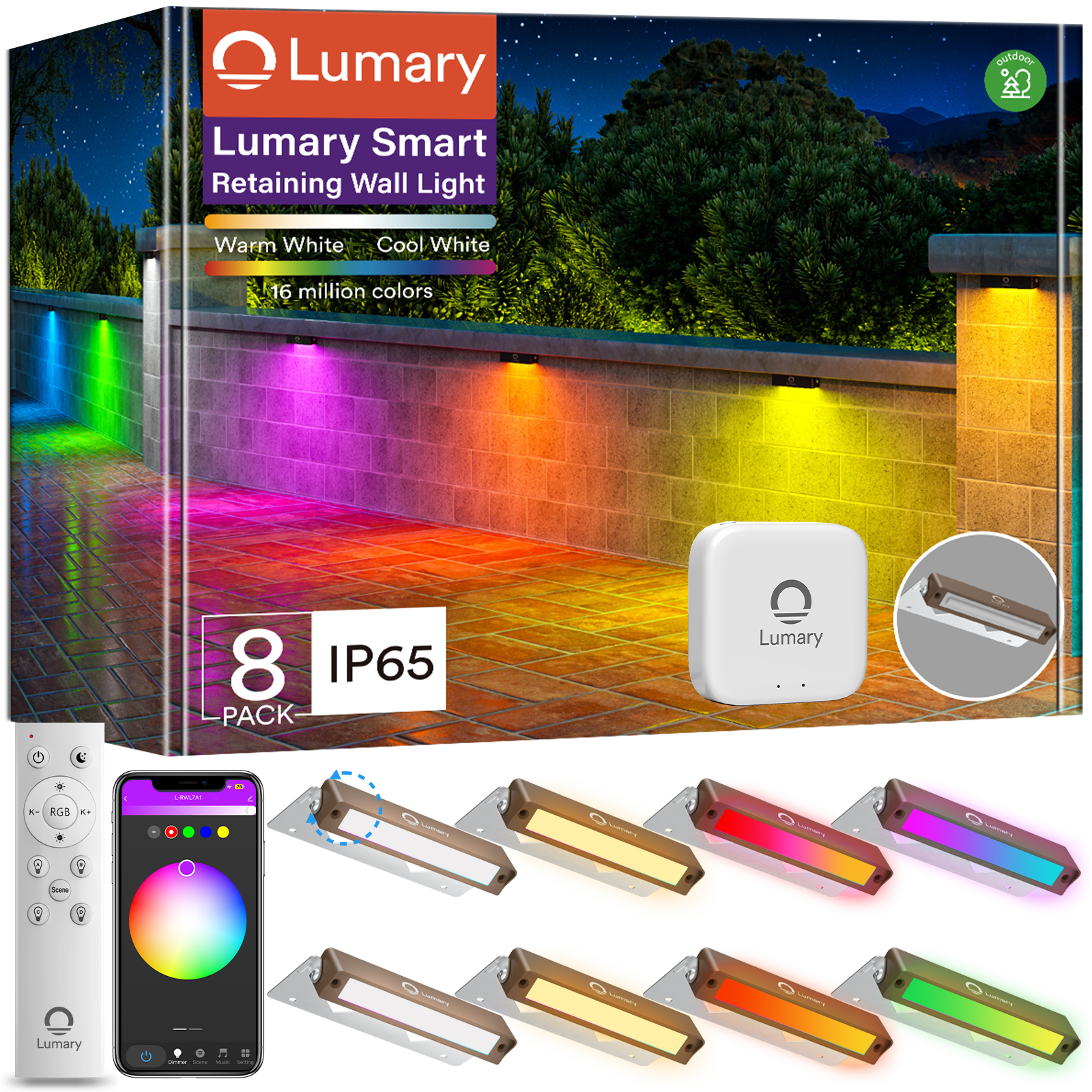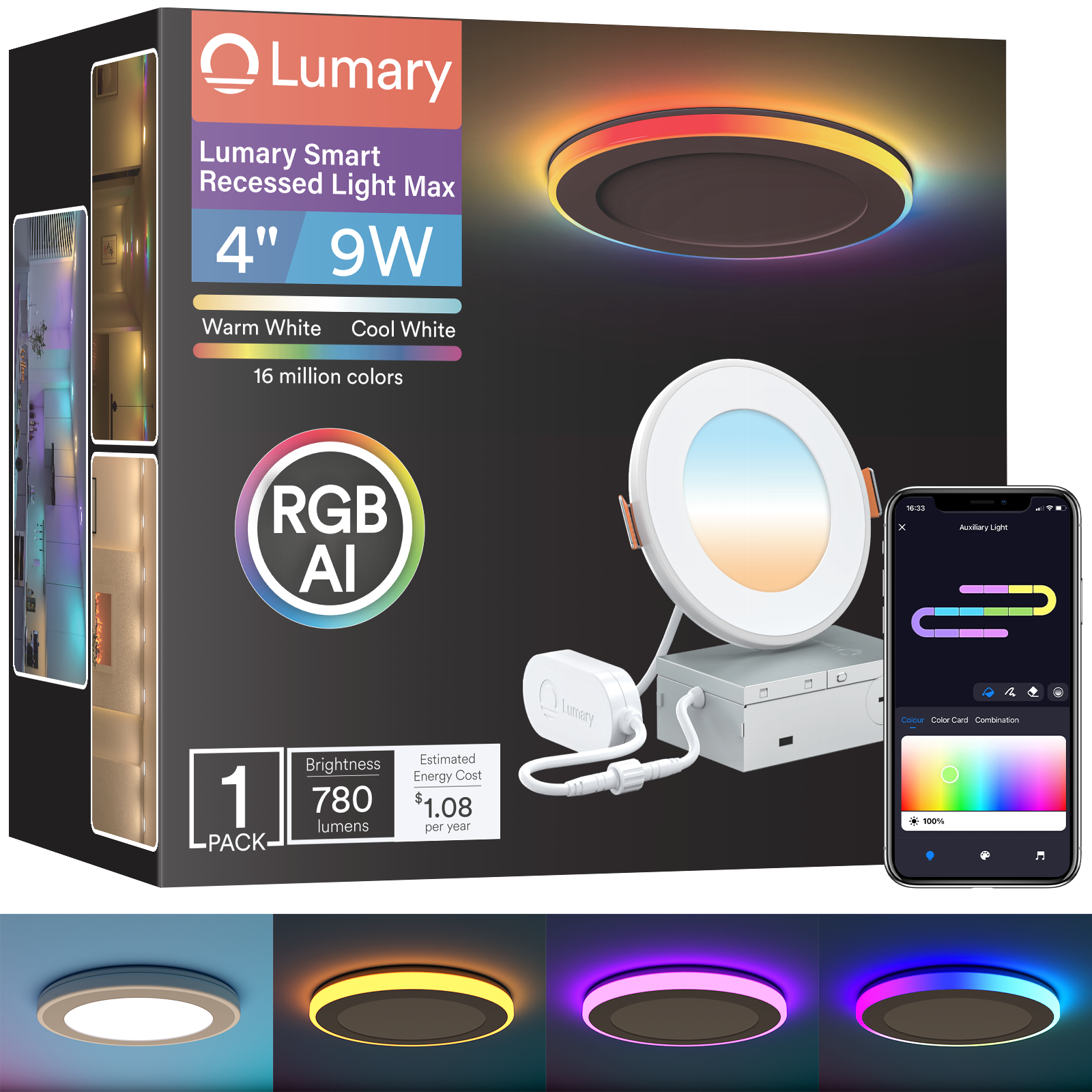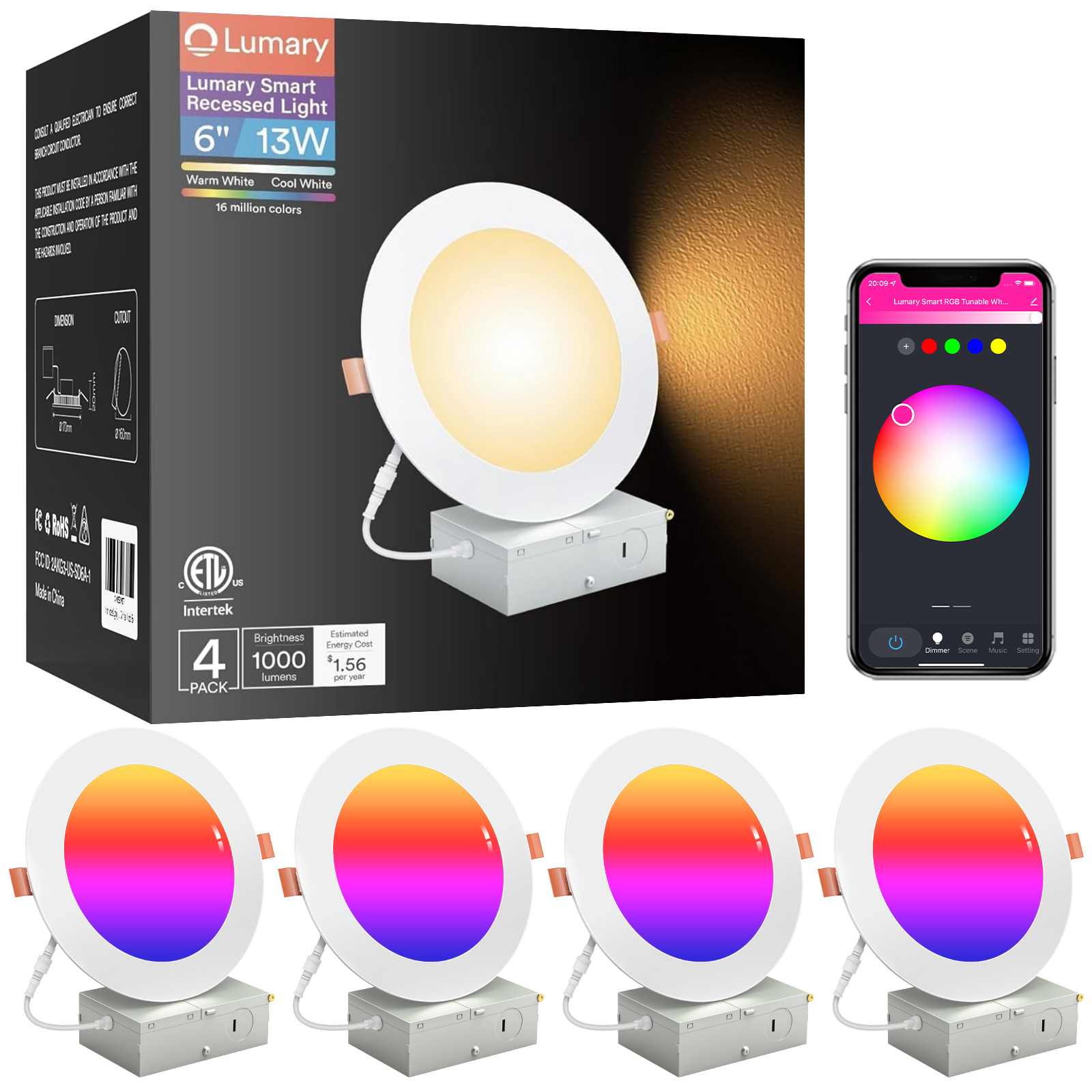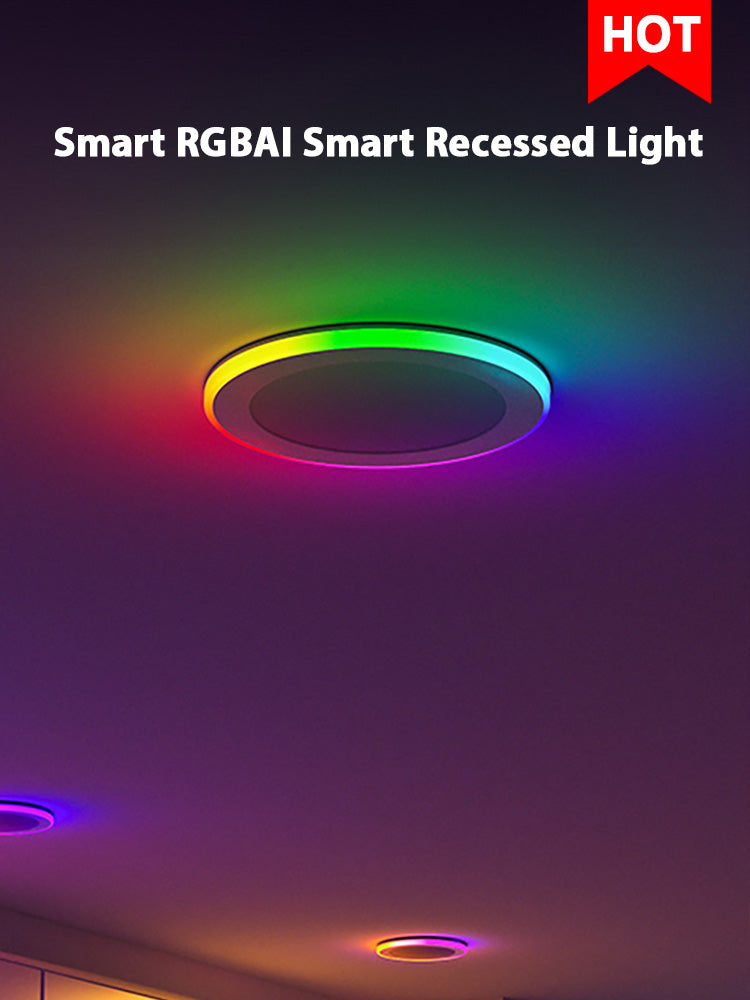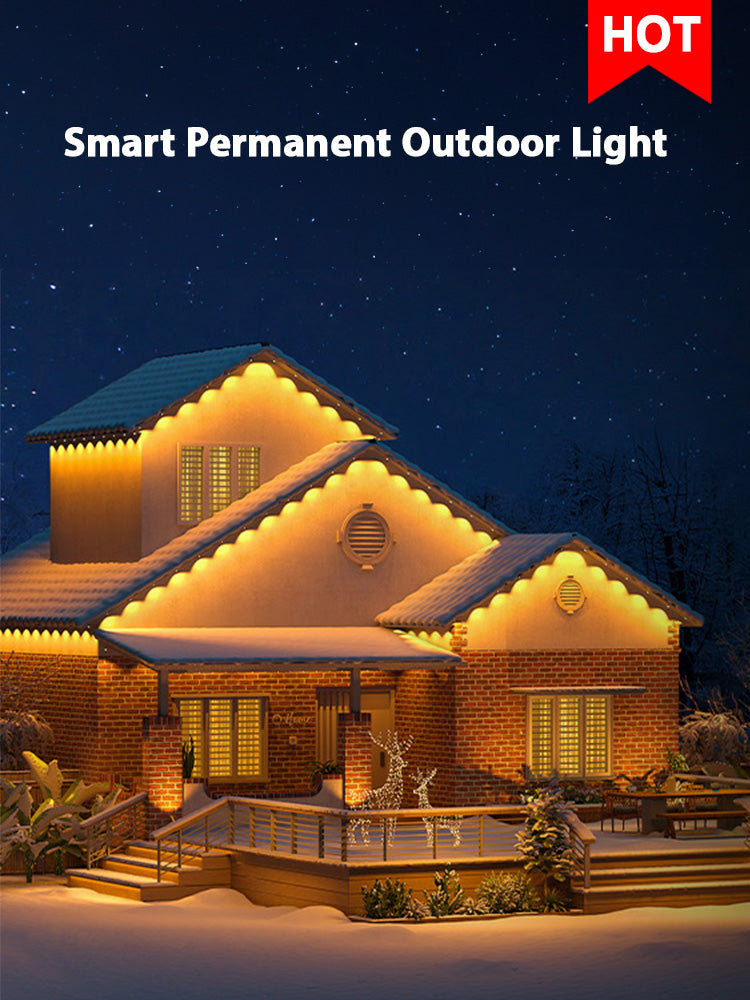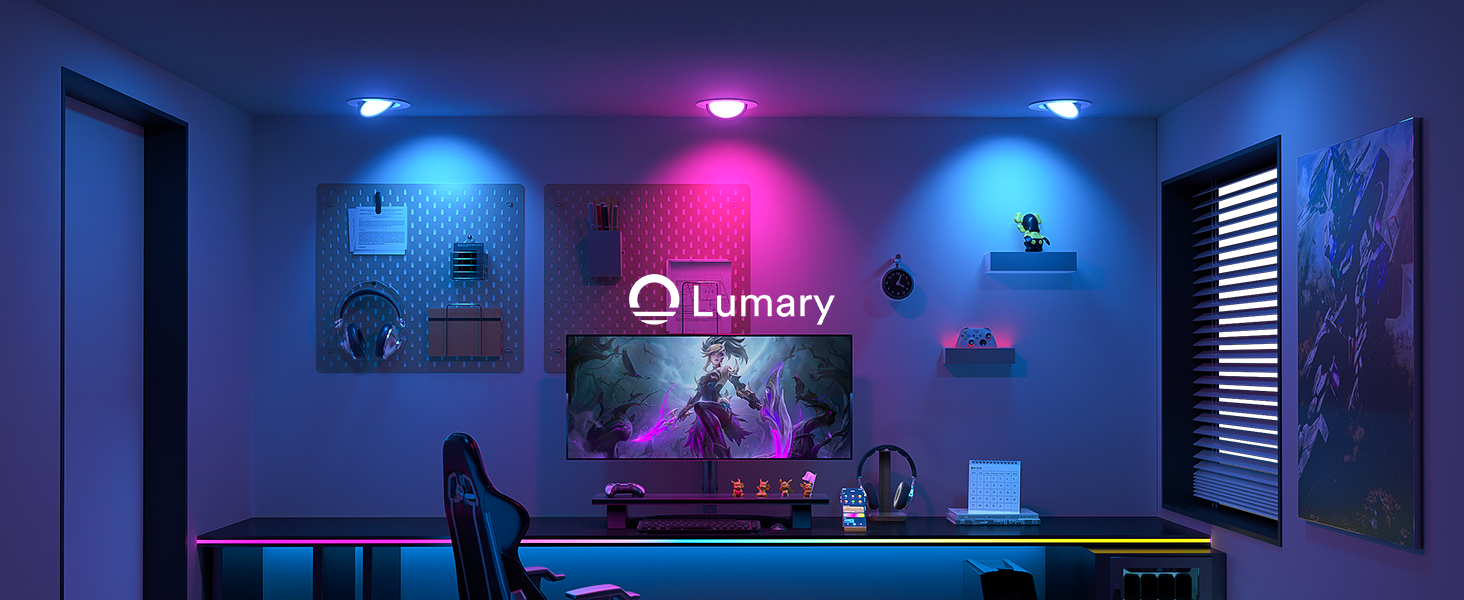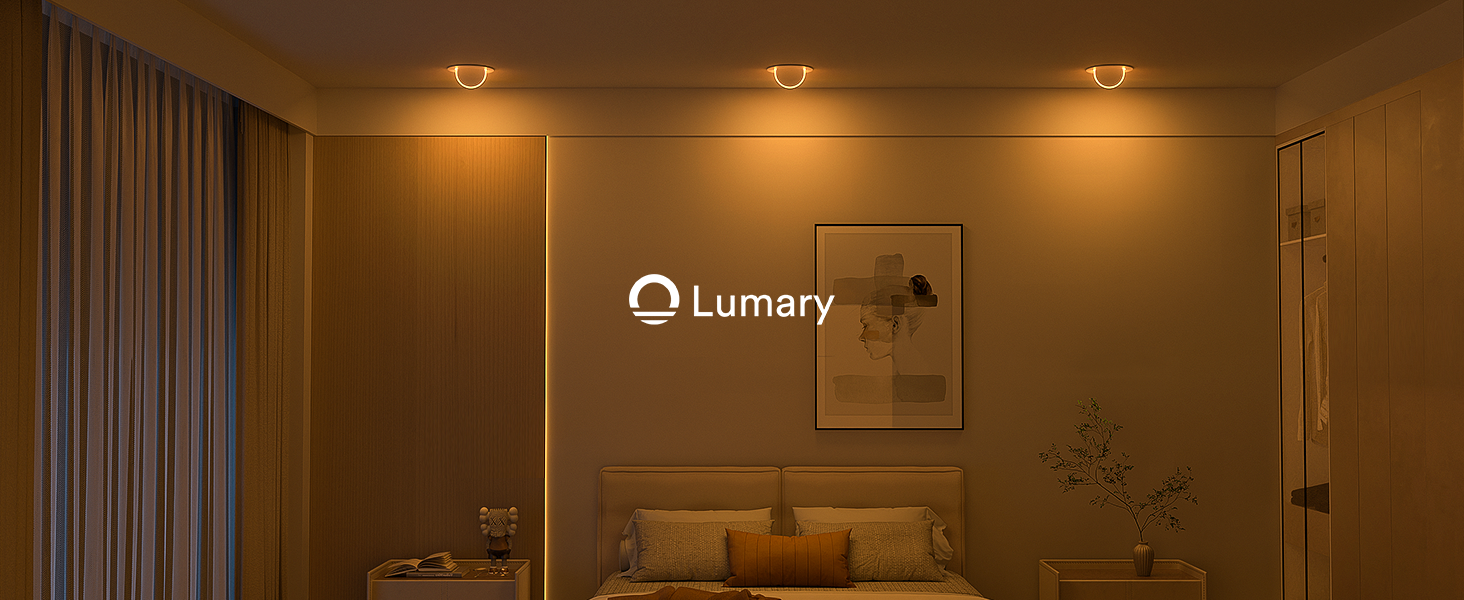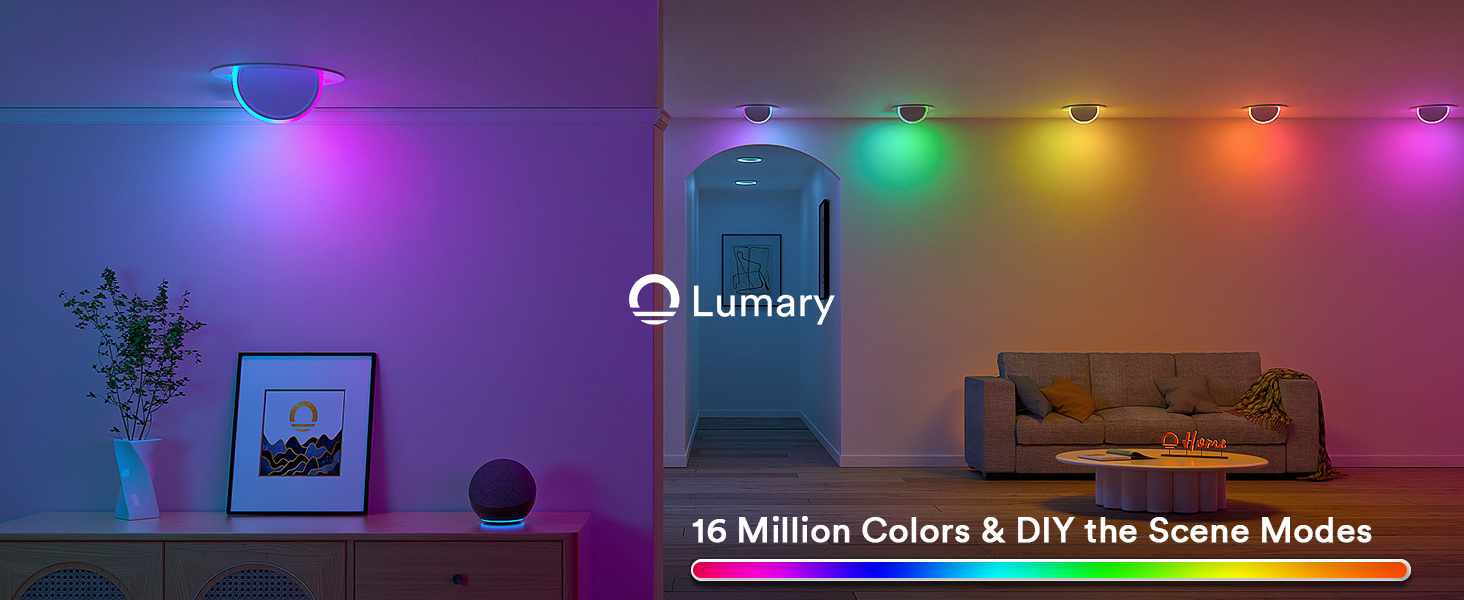You can do a diy recessed lighting project and change your room easily. Recessed lights look modern and help you set the mood. Some smart recessed lights, like the Lumary Smart Recessed Light Pro, have cool features. You can change how bright they are, pick colors, and even use your voice to control them. If you want to put in recessed lighting, the steps are simple and fun. Get ready to add recessed lighting and enjoy new lights in your home.

Key Takeaways
-
Get all the tools and materials you need first. You will need a hole saw, a stud finder, and the Lumary Smart Recessed Light Pro for smart features.
-
Make a plan for where your lights will go. Put the lights in even spaces so there are no dark spots. You can also use other lights to make the room look balanced.
-
Safety is very important. Turn off the power at the breaker before you start. Wear safety gear. Look for anything in the way before you cut the ceiling.
-
Test your lights when you finish putting them in. Make sure every light works right. Use the Lumary app to change the settings for the best results.
-
Enjoy your new smart recessed lights. You can change the brightness and colors easily. Modern lighting can make your room look and feel better.
Tools and Materials for Installing Recessed Lights
You need the right things before you start. This helps you work safely and makes the job easier. Let’s see what you should have.
Essential Tools List
You want your cuts to look neat. These tools help you do a good job:
-
Adjustable hole saw with dust shroud and depth setting (3" to 8")
-
Greenlee adjustable hole saw for recessed cans (great for budgets)
-
Rotozip with Circle Guide and vacuum attachment for neat cuts
-
Remgrit Hole Saw for drilling through different ceiling materials
-
Stud finder to locate joists
-
Tape measure for accurate spacing
-
Pencil or marker for marking cutouts
-
Screwdriver set
-
Wire stripper and cutter
These tools help you make the right holes. They also help keep your area clean.
Materials Checklist
You need more than just tools for this project. Here is a list of what you need:
-
Recessed lights (for example, Lumary Smart Recessed Light Pro)
-
14/2 electrical wire (check your local code)
-
Wire nuts and connectors
-
Electrical boxes (if needed)
-
Mounting brackets or clips
-
Lumary app (for smart control)
-
Alexa or Google Assistant (optional for voice control)
The Lumary Smart Recessed Light Pro is special. It has three lighting modes and many color choices. You can change how bright it is. You can use your phone or your voice to control it. It can even move with music. It is ETL-listed and FCC compliant, so it is safe. This makes it a good pick if you want smart lights.
Safety Equipment
Safety is very important. Make sure you have these things:
-
Safety glasses to protect your eyes
-
Dust mask for clean air
-
Insulated gloves for electrical work
-
Voltage tester to check wires
Tip: Always turn off the power at the breaker before you start. Follow your local building codes for every step.
With these tools, materials, and safety gear, you are ready. You can now install recessed lights and enjoy a brighter home.
Plan Your Recessed Lighting Layout
Map Out Light Placement
You want your recessed lighting to look great and work well. Start by thinking about where you need light most. Do you want to brighten up a reading nook or highlight your kitchen counters? Try not to rely only on recessed lights for every part of the room. If you use too many, some spots might end up too dark while others get too bright. You can mix recessed lighting with lamps or wall lights for a balanced look.
Here are some tips from lighting experts:
-
Don’t put all your lights in one area.
-
Avoid shadow zones by spacing lights evenly.
-
Add smart controls like dimmers or timers for better lighting control.
If you choose smart recessed lights like the Lumary Smart Recessed Light Pro, you can adjust brightness and color for any mood. These lights let you set scenes and even sync with music, so you get more options for every occasion.
Locate Ceiling Joists
Before you start marking spots for your recessed lights, you need to find the ceiling joists. Joists are the beams that hold up your ceiling. You don’t want to cut into them by accident. Use a stud finder to locate each joist. A tape measure helps you double-check the spacing. If you need to peek inside the ceiling, a utility knife can help you make a small test hole.
Tools that work best for finding joists:
-
Stud finder
-
Tape measure
-
Utility knife
Tip: Always check for pipes, wires, or other obstacles before you cut.
Mark and Measure
Now you’re ready to mark where each recessed light will go. Measure your room’s length, width, and height. This helps you figure out how many lights you need and where to put them. Use a lighting calculator if you want extra help. Adjust for any ceiling angles so the light spreads evenly.
Here’s a quick guide for spacing:
|
Ceiling Height |
|
|---|---|
|
8-foot |
4 feet apart |
|
10-foot |
5 feet apart |
Other tips for marking and measuring:
-
Space recessed lights 4 to 6 feet apart, depending on your room size.
-
Choose lights with the right beam angle for your space.
-
Angle-cut trims and dimmable LEDs help reduce glare.
When you plan your layout, you make sure your recessed lighting looks good and works well. Smart options like Lumary let you control everything from your phone or with your voice, so you get the perfect light every time.
Cut and Prepare for Recessed Lighting
Mark Cutout Holes
You have your plan and tools ready. Now it’s time to mark where each recessed light will go. Grab your tape measure and layout plan. Follow these steps to get perfect results:
-
Measure and mark the center of each spot for your recessed lights. Use a pencil so you can erase if you need to adjust.
-
Double-check your marks with your layout. Make sure you avoid joists and other obstacles.
-
Use a template from your light’s packaging, like the one included with the Lumary Smart Recessed Light Pro, to trace the exact circle for each opening.
Tip: Take your time with this step. Careful marking helps you avoid mistakes later.
Cut Ceiling Openings
Cutting into your ceiling can feel scary, but you can do it safely. Always remember these safety steps:
-
Turn off the power at the breaker. Use a voltage tester to make sure there’s no live electricity.
-
Wear rubber-soled shoes and work on a non-conductive ladder. This keeps you safe from shocks.
-
Put on your safety glasses and dust mask before you start cutting.
Now, use a hole saw or Rotozip to cut along your marked circles. Drill a small starter hole in the center first. Then, cut out the full circle for each recessed light. Go slow and steady. If you hit anything hard, stop and check before you keep going.
Clean Up Debris
Cutting holes makes a mess. You want your workspace clean and safe. Here’s how you can do it:
-
Clear the area and keep others away while you clean.
-
Use a bright light or portable floodlight to spot hidden dust.
-
Try telescopic cleaning tools or forked dusters to reach high spots without climbing.
-
Work in small sections so you don’t miss anything.
-
Clean the walls and floors last, since dust from the ceiling can fall down.
When you finish, your room will be ready for the next step—installing your new recessed lights. The Lumary Smart Recessed Light Pro fits right into these openings and brings smart features to your home.
Install Recessed Lighting and Wiring
Turn Off Power and Safety Checks
Before you touch any wires, you need to make sure the power is off. This step keeps you safe and prevents accidents. Here’s how you do it:
-
Go to your breaker panel and open the disconnecting means for the circuit you will work on. Make sure you see a visual opening.
-
Use a lockout/tagout device if you have one. This stops anyone from turning the power back on while you work.
-
Use a voltage tester to check every wire in the ceiling. Test both phase-to-phase and phase-to-ground. You want to see that there is no electricity.
-
Double-check by testing the circuit again before you start.
Tip: Never skip this step. Even if you think the power is off, always test the wires. Safety comes first.
Run Electrical Wiring
Now you can start running the wires for your new recessed lights. Most homes use either a 15-amp or 20-amp circuit for lighting. For a 15-amp circuit, use 14-gauge wire. For a 20-amp circuit, use 12-gauge wire. Always check your local electrical codes to make sure you use the right wire and follow the rules.
-
Make sure the total wattage of your lights does not go over the circuit’s limit. For a 15-amp, 110-volt circuit, you can use up to 1430 watts. Do not load the circuit more than 80% of its capacity.
-
Use a tape measure and painter’s tape or a pencil to mark where each light will go. Avoid joists and pipes.
-
Cut holes in the ceiling at each marked spot.
-
Run 14/2 NM-B cable from your power source to each light location. Connect the lights in parallel. This way, each light gets the same amount of power.
Note: The National Electrical Code (NEC) sets the rules for safe wiring. Always follow the NEC and your local codes for every lighting installation.
Connect and Secure Fixtures
You are ready to connect your recessed lights. Here’s what you do:
-
Strip the insulation from the ends of each wire.
-
Connect the black (hot) wires together, then the white (neutral) wires, and finally the ground wires. Use wire nuts to keep the connections tight.
-
Tuck the wires neatly into the junction box.
-
Insert each fixture into its hole in the ceiling. Make sure the mounting clips or brackets hold the fixture firmly in place. A secure fit stops the fixture from moving or vibrating.
-
If your fixture has a gasket or seal, use it to keep dust out and protect the wiring.
The Lumary Smart Recessed Light Pro makes this step easy. It comes with everything you need for a safe and quick install. This smart recessed light gives you three lighting modes: a bright downlight, a soft nightlight, and a colorful RGB mode. You can pick from 16 million colors and 14 scene modes. Adjust the brightness from 1% to 100% and set the color temperature between 2700K and 6500K. You control everything with your phone, your voice, or the Lumary app. The memory function remembers your last setting, so your favorite light is always ready. The Lumary Smart Recessed Light Pro is ETL-listed and FCC compliant, so you know it is safe and reliable.
Test Before Final Install
Before you finish, you need to test your new recessed lighting. This step helps you catch any problems early.
-
Restore power at the breaker.
-
Use the Lumary app or your wall switch to turn on the lights.
-
Check each light to make sure it works. Try all the modes if you have smart features like the Lumary Smart Recessed Light Pro.
-
Look for common issues:
|
Issue |
Description |
Solution |
|---|---|---|
|
Sagging Trim |
The trim hangs down or looks loose. |
Turn off power, fix or replace springs, and re-install trim. |
|
Lights Turn Off |
Lights shut off by themselves. |
Check bulb wattage, replace bulbs, or check the limit switch. |
|
Blinking Lights |
Lights blink or flicker. |
Check for a thermal protection issue and replace if needed. |
|
Blown Bulb/Socket |
Light does not turn on. |
Replace the bulb or socket after turning off the power. |
If everything works, turn the power off again and finish securing the fixtures. Make sure all trims and covers are in place.
Tip: Regularly check your fixtures for damage or wear. Replace any broken parts right away to keep your lighting safe.
You have now learned how to install recessed lighting in your ceiling. With smart options like the Lumary Smart Recessed Light Pro, you get more control, more colors, and a longer lifespan than traditional fixtures. Enjoy your new lighting installation!
Test and Finish Installing Recessed Lights
Install Bulbs and Trims
You are almost done with your recessed lighting project. Now it is time to install the bulbs and trims. Start by pushing the recessed housing into each ceiling opening. Make sure the fixture fits snugly. Most modern recessed lights use spring clips or friction brackets, so you will hear a click when they lock in place.
Next, attach the trim to the housing. This gives your ceiling a clean, finished look. If you use smart recessed lights like the Lumary Smart Recessed Light Pro, you do not need a separate bulb. The light comes built-in and ready to go. For other fixtures, screw in an LED bulb. Do not over-tighten the bulb. Wipe the trim with a soft cloth to remove fingerprints and dust. Check that each trim lines up with the others for a neat appearance. Look for any gaps between the trim and the ceiling. A tight fit keeps your lighting looking sharp.
Tip: Test each fixture by gently pressing on the trim. It should not move or sag.
Restore Power and Test
Now you can bring your new recessed lighting to life. Follow these steps to restore power and test your lights:
|
Step |
Description |
|---|---|
|
1 |
Turn off the electricity at the circuit breaker. Label the breaker if needed. |
|
2 |
Use a non-contact voltage tester to confirm the power is off. |
|
3 |
Test for live wires with a voltage tester after turning off the electricity. |
|
4 |
Install the new recessed light fixture by connecting the wires correctly. |
|
5 |
Re-enable the power and test the light for correct operation. |
Once you flip the breaker back on, use your wall switch or the Lumary app to turn on your smart recessed lights. Try out all the features. Adjust the brightness, change the color, or set a scene. If you see any flickering or a light does not turn on, turn off the power and check your connections.
Final Safety Check
Before you finish, do a quick safety check. Walk around the room and look at each recessed fixture. Make sure every trim sits flush with the ceiling. Check that no wires are exposed. Test each light again to confirm it works as expected. If you use Lumary Smart Recessed Light Pro, try the nightlight and RGB modes to make sure everything responds.
Remember: Safety comes first. If you notice anything unusual, turn off the power and fix it before using your new recessed lighting.
You did it! Your room now has modern, smart recessed lighting that you can control with your phone or voice. Enjoy the new look and feel of your space.
You now know how to put in recessed lighting. If you plan well and measure carefully, you can do this project. Always follow safety rules to stay safe. Check your layout twice before you start. Use IC-rated housings if your ceiling has insulation. Smart recessed lights like Lumary save energy and are easy to use. They also make your room look modern. Enjoy your new lights and try more projects soon!
Tip: If you are not sure, ask an electrician for help.
|
Installation Method |
Cost per Fixture |
|---|---|
|
DIY Installation |
$50 |
|
Professional Installation |
$100 |
FAQ
How do you control the Lumary Smart Recessed Light Pro?
You can use the Lumary app on your phone or give voice commands with Alexa or Google Assistant. The app lets you change colors, brightness, and lighting scenes. You can even share control with your family.
Can you install Lumary recessed lights in any room?
Yes! You can put Lumary Smart Recessed Light Pro in living rooms, bedrooms, kitchens, or hallways. These lights fit most ceilings and work well in many spaces. Just make sure you follow safety rules during installation.
What makes Lumary Smart Recessed Light Pro different from regular lights?
You get three lighting modes: bright downlight, soft nightlight, and colorful RGB. You can pick from 16 million colors and set scenes for any mood. The lights also sync with music for fun parties.
Do you need a special dimmer switch for Lumary smart lights?
No, you do not need a traditional dimmer switch. You control brightness and color through the Lumary app or by using your voice. This setup gives you more options and smoother control.
How long do Lumary Smart Recessed Lights last?
These lights last over 25,000 hours. They are ETL-listed and FCC compliant, so you know they are safe and reliable. You will not need to replace them often.

